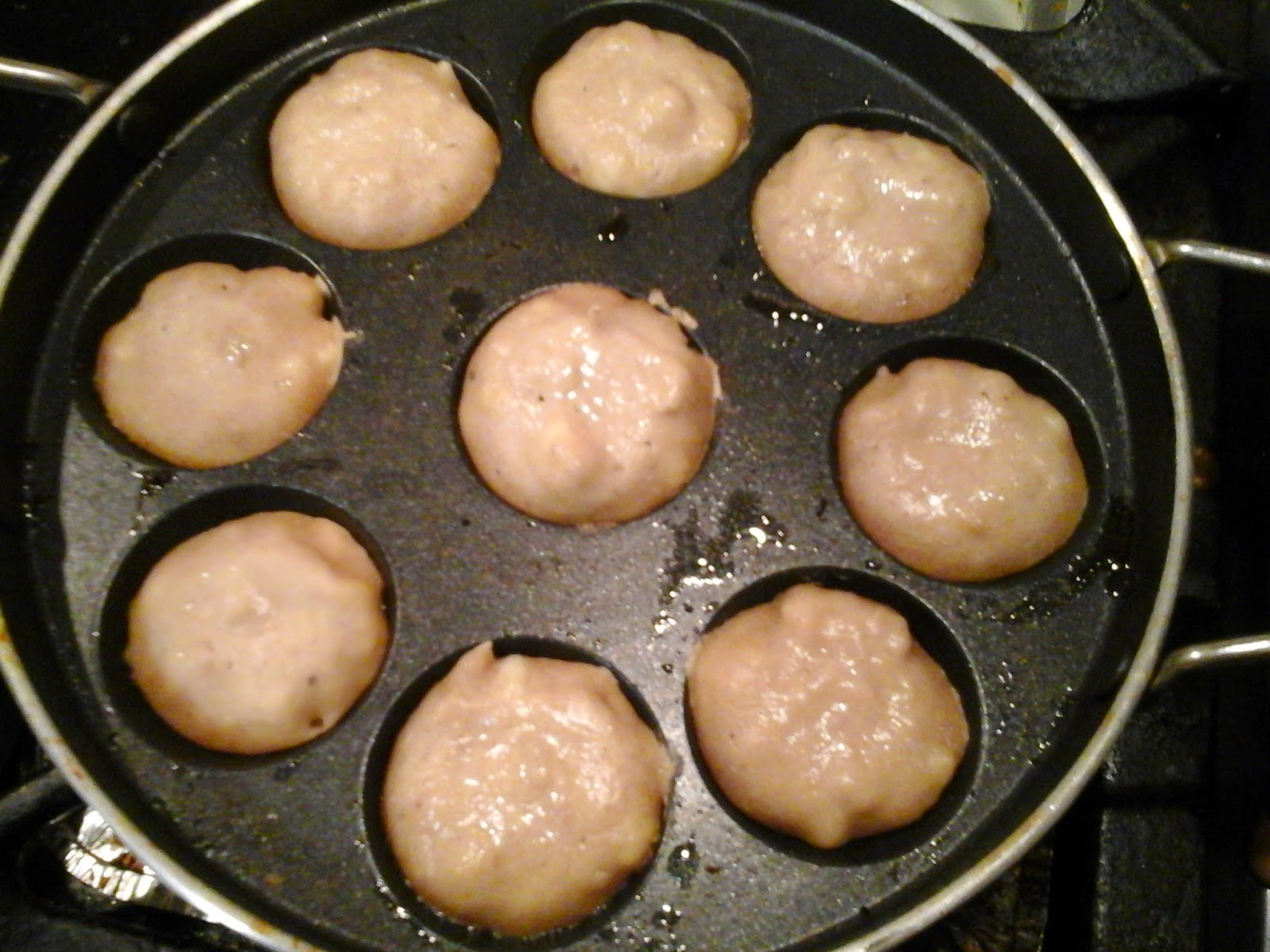Fully ripened bananas in the banana stand will always be sympathized and thrown away in our home. Just wanted to rescue those ripened soggy bananas, I made these yummy sweet treats called as "Banana Walnut Kuzhi Paniyaram". Tiny round shaped muffin like Paniyarams melted in the mouth and its an excellent treat for the kids at any time. Well, I served these sweet Paniyarams for breakfast one day. Kids loved those paniyarams and more than them, my husband loved those. So, he's got into the habit of leaving 2 or 3 bananas in the stand nowadays.!!! Creativity starts once you wish to transform something in your kitchen and make an edible food item. Like that, we moms do this everyday and come out with great ideas, right. My dear bloggers, try to ignite the spark in you and share with us your thoughts and findings.
Fully ripened bananas - 4 or 5
Chopped walnuts - 1/2 cup
Powdered Jaggery or Brown Sugar - 1 Cup
Whole wheat flour - 1 Cup
Cardamom Powder / Elachi - 2 tsp
Water - As required to make the batter.
Ghee - Enough to brush the moulds and paniyarams.
Procedure
- In a big mixing bowl, add the powdered jaggery first with little water. Let it completely get dissolved in the water. Then, add the other ingredients into the bowl and mix them into a thick batter. Consistency of the batter should not be too thick ( like chappathi dough ) and not too thin ( like rava dosa batter ). It should be in a medium thick consistency enough to pour them into the small round moulds.
- While preparing the batter, heat the Kuzhi Paniyaram pan on medium heat. Brush the rounds with little ghee.
- When its heated enough, reduce the flame and pour the batter into the paniyaram moulds carefully. Spilling the batter or improper pouring might result in shapeless paniyarams or might spoil the round shaped treats.
- After pouring into the moulds, slowly heat the pan on medium heat with the lid closed. Rotate the pan slightly so that the heat is spread uniformly across the entire pan.
- After 3 minutes, open the lid and check whether the sweet paniyarams are steamed properly. Flip the paniyarams onto the other side carefully using a thin spoon. Brush the top of the paniyarams with little ghee.
- After 3 minutes, check if the paniyarams are fully cooked and turned into golden brown colour. Take out the paniyarams from the moulds and repeat the process with the rest of the batter.

- Make sure the flame is not high while making the paniyarams. Otherwise they might turn black very quickly.
- You can add chopped nuts like almonds, cashewnuts, pistachios into the batter as well and make it more nutritious and tastier.
- You can add ghee drops on the sides of the moulds if you wish to. I just brushed the moulds with little ghee and brushed the paniyarams with little ghee for flavour.



